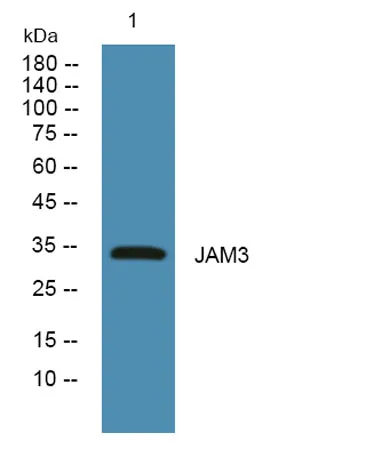JAM3 rabbit pAb
CAT:
855-ES9186-01
Size:
50 μL
Price:
Ask
- Availability: 24/48H Stock Items & 2 to 6 Weeks non Stock Items.
- Dry Ice Shipment: No




JAM3 rabbit pAb
- Description: Tight junctions represent one mode of cell-to-cell adhesion in epithelial or endothelial cell sheets, forming continuous seals around cells and serving as a physical barrier to prevent solutes and water from passing freely through the paracellular space. The protein encoded by this immunoglobulin superfamily gene member is localized in the tight junctions between high endothelial cells. Unlike other proteins in this family, the this protein is unable to adhere to leukocyte cell lines and only forms weak homotypic interactions. The encoded protein is a member of the junctional adhesion molecule protein family and acts as a receptor for another member of this family. A mutation in an intron of this gene is associated with hemorrhagic destruction of the brain, subependymal calcification, and congenital cataracts. Alternative splicing results in multiple transcript variants. [provided by RefSeq,
- Gene ID: 83700
- UniProt: Q9BX67
- Cellular Locus: Cell membrane ; Single-pass type I membrane protein. Cell junction. Cell junction, desmosome. Cell junction, tight junction. Detected in the acrosome region in developing spermatids (By similarity). In epithelial cells, it is expressed at desmosomes but not at tight junctions (PubMed:15194813). Localizes at the cell surface of endothelial cells; treatment of endothelial cells with vascular endothelial growth factor stimulates recruitment of JAM3 to cell-cell contacts (PubMed:15994945)..; [Soluble form of JAM-C]: Secreted.
- Host: Rabbit
- Species Reactivity: Human, Mouse, Rat
- Immunogen: Synthesized peptide derived from human protein . at AA range: 60-140
- Clonality: Polyclonal
- Validated Applications: WB, ELISA
- Stability: 1 year
- Concentration: 1 mg/mL
- Dilution: WB 1:500-2000 ELISA 1:5000-20000
- Molecular Weight: 34kD
- Storage Conditions: PBS with 0.02% sodium azide and 50% glycerol pH 7.4. Store at -20°C. Avoid repeated freeze-thaw cycles.
